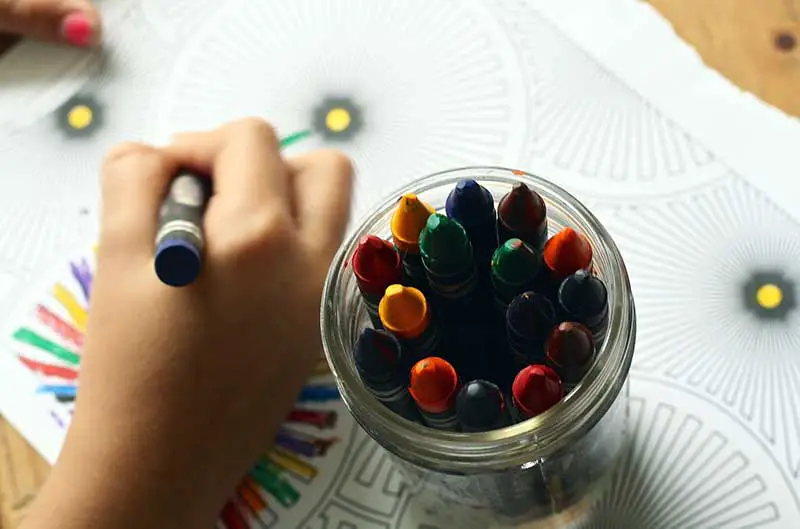How Do You Explain Conflict Resolution To A Child?
Hey there! Ever wondered how to tackle those tricky moments when kiddos clash? In this article, we’ll dive into the art of conflict resolution for kids. From sharing toys to navigating disagreements, let’s explore how to “Explain Conflict Resolution To A Child” in a way that’s easy, fun, and totally kid-friendly.
Table of Contents
How Do You Explain Conflict Resolution To A Child?
Conflict Resolution is finding a peaceful solution for a conflict or a disagreement between two or more parties. Conflict resolution can be driven through negotiation, mediation, and arbitration.
It aims to eliminate the conflict before it turns into huge destruction. It paves the way for a peaceful environment and mental stability of a person. Since conflicts are essentially social phenomena, how do you explain conflict resolution to a child? It is a popular issue among parents and teachers.
Children face conflicts from an early age, which can affect their whole lives. Therefore, teachers and parents need a proper idea of explaining conflict resolution to a child. It is a stressful concern for kids as well as teachers and parents.
Conflict resolution skills should be taught to kids appropriately for their ages, brain capacity, mentality, development, and experiences. Teaching conflict resolution from early childhood may also lead kids to manage conflicts effectively in their future adulthood. Therefore, it will be an investment for your child’s future.
While concerning how you explain conflict resolution to a child, let’s first identify what conflict resolution in early childhood means and how kids deal with conflicts. Then, at the end of reading this article, you’ll understand how you should teach conflict resolution to preschoolers and conflict resolution strategies you can try with kids.
So, spending 2-3 minutes with this article will be a good use of time. Keep reading, and it will be a future investment for your kid.
What is conflict resolution in early childhood?
Before understanding how you explain conflict resolution to a child, you need to identify what conflict resolution is in early childhood. Children face conflicts from an early age, varying in several forms.
Conflict can be defined as a challenge to the thoughts or behaviour of a person or a controversy in different ideas. It is natural for conflicts to occur between kids regarding toys, space, power, ideas, mistreatment, communication, relationships, etc.
When children have no proper idea about conflict resolution, these conflicts can be uncomfortable and uneasy in their lives. Therefore, as parents and teachers, you must teach kids conflict resolution to manage conflicts themselves.
Infants or toddlers can face conflicts, too, and it is better to help them with conflict resolution at this age. The practice of conflict resolution from a young age may let them face conflicts and manage them effectively later.
Parents should not interfere directly in the conflict and should allow the kids to find solutions on their own. Providing guidance and encouragement will improve their problem-solving skills.
Within conflict resolution in early childhood, the conflicts should be solved in a way that does not hurt anyone. Children are susceptible, and during their early childhood, they are in the socialization process. They have a limited scope of family and classroom interaction.
Many conflicts can occur in adapting to new environments, especially from the home to the preschool classroom. These conflicts can be physical or psychological. However, they should be resolved by letting kids learn from the conflict and be given opportunities to handle situations.
Conflict resolution in early childhood must foster respect for others, let kids endure situations with patience and find solutions with self-control. Conflict resolution is an important social skill for a kid that should be nurtured from early childhood.
How do kids deal with conflicts?
How you explain conflict resolution to a child depends on how kids deal with conflicts. First, You must identify kids’ reactions to conflicts and their emotions and behaviours in dealing with them. Conflicts can happen on every occasion at home or in the classroom.
Most often, we can see siblings as well as friends; peers have conflicts in these settings. Kids’ nature is to be aggressive and fight over little things. These conflicts can disrupt kids’ mentality, attention, studies, and social abilities. Suppose you miss the situation and teach conflict resolution to kids. In that case, conflicts can lead to destructive violence, and it can affect their lives.
I have noted one incident regarding one of my neighbour’s kids. That boy was a preschooler, and once at the preschool, he had a conflict with his friend regarding an eraser. Then, with aggressiveness, he hit the friend’s eye with his pencil, and that kid had to operate his eye, and now it’s blind.
Look at this incident carefully. If the parents and teachers had taught the kids how to deal with conflicts and peaceful conflict resolution techniques, such a massive disaster wouldn’t have happened. One child lost his eye for his lifetime, and the other remained with a lifelong regret that can affect his mentality.
Since kids are sensitive and don’t have proper knowledge regarding dealing with conflicts, they usually choose fighting and aggressive behaviours in differences and controversies. It may cause massive destruction, like the above-mentioned incident.
They should be taught to accept similarities as well as differences between each other and respect them. That’s why conflict resolution is very important for kids. This conflict resolution skill especially affects their future since everyone has to face several conflicts within the life lane.
Due to kids’ violent nature of dealing with conflicts, teachers and parents must pay continuous attention to kids and should try to reduce the negative impact of conflicts on kids by having proper knowledge on the matter; how do you explain conflict resolution to a child?
How do you teach conflict resolution to preschoolers?
Preschoolers are the best age group to teach conflict resolution. Preschool is not too young to teach conflict resolution skills since that age was the first period of kids starting to interact with outside society except at home.
This age is the best age to manage conflict resolution in kids’ minds, and it can control their emotions and prepare them for future challenges. So, I’ll pay significant attention to preschoolers in explaining conflict resolution to a child.
Below are some ways you can teach them conflict resolution.
- Improve communication skills
Since preschool is the first place for kids to socialize after their families, several communication errors may occur. Kids may not be willing to share their emotions and ideas with parents and teachers at this age since they do not adequately understand how to express and communicate them.
Therefore, improving communication skills is important at this age and helps them identify the characteristics of several emotions and opinions of others. Then, teach them how to express their emotions with you, and it will lead you to identify the root causes of conflicts before they have risen.
- Teach conflict-related stories
A good way to teach kids about conflict resolution is through conflict-related stories. You can choose stories with similar conflicts that preschool kids can face and teach them interestingly.
Since kids love stories, they will remember them and be deeply embedded into their minds, helping them manage conflicts effectively.
- Engage kids in activities to control themselves.
When a conflict arises, you need to teach them conflict resolution skills and how to initiate self-control. You can involve kids in several activities, such as drawing, writing, or listening to music to calm their minds and control emotions.
Practice with kids to find suitable self-controlling activities according to their preferences and involve them in difficult situations.
- Explain conflict resolution ways by using group activities.
Conflicts occur due to differences between each other. Therefore, you can teach preschoolers about these differences and let them engage in group activities and identify each other. Then, teach kids to respect those differences and minimize conflicts.
You can use fun activities like role plays with conflict situations and ask them to find collective solutions. This will lead them to learn about conflict resolution interestingly.
- Praise for successful conflict resolutions
Encourage kids to find solutions for conflicts independently and assure them that they will receive praise for it. It will help them understand what successful conflict resolution means and reduce kids’ aggressive behaviour.
Conflict Resolution Strategies
Conflict resolution strategies are major in considering how you explain conflict resolution to a child. As parents and teachers, you need to follow up on several strategies to resolve conflicts effectively.
Here are some strategies you can try with your kid.
- Role model behaviour
The best conflict resolution strategy you can follow with kids is modeling the behaviour you expect from them. Be a good role model and show them how to resolve and manage conflicts successfully.
Kids are always preferred to follow and imitate their parents and teachers. Therefore, you can use their nature to resolve conflicts by controlling themselves.
- Brainstorming activities
Encourage kids to brainstorm and find solutions for conflicts. Brainstorming activities can be conducted to help kids find out the best solution from several answers in their heads.
It is hard to identify the best option, but let kids try to understand it through thinking further and separating solutions. It will enhance their ability to think and critically analyze.
- Communicate feelings
Kids enter into conflict due to miscommunication and having no space to share feelings. They quickly become frustrated and aggressive while engaging in negative behaviours.
You can practice the statement “I feel” to make kids express their emotions and feelings first. Be a good listener and always try to guide the kids to share their feelings with you.
- Practice the stoplight technique.
You can use this method to calm down the minds of kids and let them rethink the situation. Ask the kid to picture a stoplight by closing his eyes and turning the lights on step by step. Use red light to calm down with deep breaths and yellow light to evaluate the problem.
Ask him to think about possible solutions, and when the green light is on, let him choose a strategy and try it. You can practice this with your kid, and then he will remember to use it in conflict situations.
- Active listening
Listening is a good strategy you can use in conflict resolution. First, parents and teachers need to listen to kids well and grab the conflict. Then, it would be best if you let kids listen to each other.
A conflict has two parties, and you need to practice listening to the feelings and opinions of others as well. Making them respect others by improving their listening skills and understanding the situation of others will make it easy to resolve the conflict.
- Good manners
Practice your kids’ good manners of forgiving, saying sorry and thank you, respecting others, staying patient, etc. Those good manners will let your kids resolve conflicts in a friendly and peaceful manner without any hatred. It is natural to have conflicts between kids.
But you need to pay attention to resolving it peacefully with no future conflicts or hatred towards each other. After resolving the conflict, let them apologize and shake hands. It will reduce bad tempers between each other.
Conclusion
So, how do you explain conflict resolution to a child? What strategies and techniques can you use to teach them about conflicts and resolve them? Now you have answers to these questions, and you have got a clear idea about the issue.
However, you know that conflicts are a natural phenomenon in human society, and it’s your responsibility as teachers and parents to make kids aware of them. Teaching conflict resolution is one of the best investments you can make in your child in preparing him to face the future.







